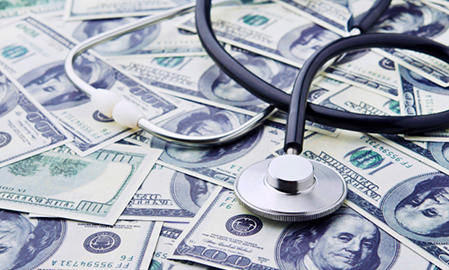Spending more on cancer care is associated with better outcomes, according to mortality data studied by a team of researchers from Precision Health Economics, the University of Chicago and the drugmaker Celgene.
The researchers said in the study published in the April issue of Health Affairs they focused on mortality rates as opposed to survival rates to avoid mitigating factors like overdiagnosis among the 16 members of the Organization for Economic Cooperation and Development (OECD). Higher-spending countries during the surveyed period of 1995 to 2007 included Japan, Iceland, Norway and the US. Medium-spending countries included Australia, Denmark and France, while low-spending countries included Italy, Slovakia and Spain.
The result was “a clear separation of cancer mortality levels across the spending categories,” with mortality sinking as spending rose. The researchers said an additional surprise was that this occurred even though higher-spending countries had lower levels of cancer deaths to begin with in 1995, the starting point for the study.
In higher-spending countries every $1,000 spent on cancer was associated with 1.6 fewer cancer-related deaths for every 100,000 people, compared to the 0.39 reduction in mortality when looking at composite results for the 16 OECD countries.
High-spending countries spent a mean of around $50,026 on cancer care per patient. Mortality rates were also lower for high-spending countries if looking at a mean of $30,000 in spending, with this money being associated with 2.45 fewer deaths in these countries, compared to the 0.64 reduction found with this same expenditure among medium-spending countries.
The study said that “the United States spends more on cancer care than any other country” and has prices that are “significantly higher … than in other OECD countries.”
The researchers noted that the results also show there has to be more to the lower mortality rate than a higher medical bill. They said that higher-spending countries may have access to more treatments, which could account for the lower mortality rates, or that higher-spending countries may be more efficient at using their resources than lower-spending countries.
Pharmacy benefits manager Express Scripts noted in its 2014 trend report that cancer therapies are among the most expensive therapy classes and that costs will only continue to rise because it expects the number of people using cancer drugs to increase. The PBM said that oncology drug use rose 24.6% in 2014 compared to 2013, and unit costs rose 12.6%. The PBM also noted that longer treatment regimens and high prices will continue to drive costs higher, boosted by “advances in cancer survivorship.”
Cancer drugs account for about 35% of a cancer patient’s total treatment costs, according to a 2014 Journal of Clinical Oncology study.
Cost is enough of a concern that it prompted a Texas oncologist to petition for price caps. It can also be enough of a barrier that the American Society of Clinical Oncology is encouraging its physician members to discuss care within the context of “potential treatment options, expected benefits and the physical and financial impacts of treatment.” The average cost of some branded cancer drugs—which may comprise one element of cancer treatment—is close to $40,000 a month.








